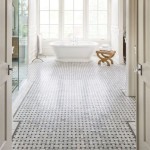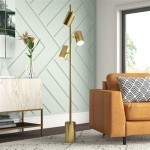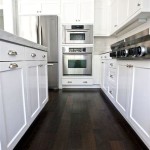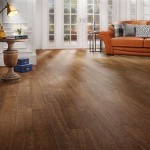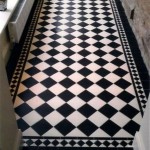Small White Bathroom Floor Cabinet: Maximizing Storage in Limited Spaces
The small white bathroom floor cabinet is a versatile and practical storage solution for bathrooms of all sizes, particularly those with limited square footage. Its compact design allows it to fit seamlessly into tight spaces, while its white finish adds a touch of brightness and cleanliness to the overall ambiance. Choosing the right cabinet involves careful consideration of dimensions, storage needs, material, and style to ensure it complements the existing bathroom décor and provides optimal functionality.
These cabinets address a common need: maximizing storage in a room where space is often at a premium. Bathrooms frequently require storage for toiletries, cleaning supplies, towels, and other essentials. A well-chosen floor cabinet can transform a cluttered bathroom into an organized and efficient space. The availability of various designs, from simple shelves to intricate cabinets with drawers and doors, ensures a solution for diverse organizational requirements.
Key Point 1: Considerations When Selecting a Small White Bathroom Floor Cabinet
Selecting the ideal small white bathroom floor cabinet requires careful evaluation of several factors. These factors ensure the chosen cabinet meets the homeowner's specific needs and integrates harmoniously with the bathroom's existing aesthetic. The most critical considerations include dimensions, storage capacity, material durability, and style compatibility.
Dimensions: Measuring the available space is the first crucial step. Accurately determining the width, depth, and height constraints ensures the cabinet will fit comfortably without obstructing movement or interfering with existing fixtures. Consider the placement of plumbing, electrical outlets, and door swings when taking measurements. A cabinet that is too large will feel cramped and impede traffic flow, while one that is too small may not provide adequate storage.
Storage Capacity: The storage needs of the household dictate the type and configuration of the cabinet. Evaluate the volume of items requiring storage and identify the most efficient organizational methods. Open shelves are suitable for frequently accessed items, while drawers provide concealed storage for smaller items or those requiring protection from dust and moisture. Cabinets with adjustable shelves offer flexibility in accommodating items of varying heights. Consider cabinets with specific features like tilt-out laundry hampers or built-in medicine cabinets for added functionality. Internal shelf depth is also crucial; shallow shelves may not accommodate larger bottles or containers, while deep shelves can lead to items being lost in the back.
Material Durability: Bathrooms are inherently humid environments, making moisture resistance a paramount concern. Opt for materials that are specifically designed to withstand damp conditions and prevent water damage. Common materials include manufactured wood with moisture-resistant coatings, solid wood treated with waterproof sealants, and plastics. Avoid materials prone to warping, swelling, or mildew growth. Hardware, such as hinges and drawer pulls, should also be made from rust-resistant materials like stainless steel or coated metal. The cabinet's finish should be resistant to chipping, scratching, and fading from exposure to water and cleaning products. Consider the long-term maintenance requirements of the material and choose one that is easy to clean and maintain.
Style Compatibility: The cabinet's style should complement the existing bathroom décor. A white cabinet is generally versatile and can blend seamlessly with various styles, from modern and minimalist to traditional and farmhouse. However, it is essential to consider the cabinet's design details, such as the door style, hardware finish, and overall shape. A cabinet with clean lines and simple hardware will suit a modern bathroom, while one with ornate details and antique-style hardware will be more appropriate for a traditional bathroom. The shade of white is also a consideration; a bright white will create a crisp and contemporary look, while an off-white or cream will evoke a warmer and more traditional feel. Consider the existing color palette of the bathroom and choose a cabinet that complements the walls, flooring, and fixtures.
Key Point 2: Different Types of Small White Bathroom Floor Cabinets
The market offers a diverse range of small white bathroom floor cabinets, each designed to cater to specific storage needs and aesthetic preferences. Understanding the different types allows consumers to make informed decisions and select the cabinet that best suits their individual requirements. The most common types include those with open shelves, closed cabinets, combinations of shelves and cabinets, and specialized designs like corner cabinets and over-the-toilet cabinets.
Open Shelves: Cabinets with open shelves offer easy access to frequently used items such as towels, washcloths, and toiletries. They are ideal for creating a display of decorative items or showcasing neatly folded linens. Open shelving provides a sense of spaciousness and can help to visually enlarge a small bathroom. However, open shelves also require more frequent cleaning to prevent dust and clutter from accumulating. Consider using decorative baskets or containers to organize items on the shelves and maintain a tidy appearance.
Closed Cabinets: Cabinets with doors provide concealed storage, hiding clutter and protecting items from dust and moisture. They are ideal for storing cleaning supplies, personal hygiene products, and other items that are not aesthetically pleasing. Closed cabinets offer a more streamlined and organized appearance. The door style is a crucial design element; options include flat-panel doors for a modern look, raised-panel doors for a traditional feel, and glass-front doors for a combination of display and concealment. The type of hinges also affects the cabinet's functionality; soft-close hinges prevent slamming and ensure quiet operation.
Combination Shelves and Cabinets: These cabinets offer a balanced approach, providing both open and closed storage options. They are ideal for storing a variety of items, allowing for both display and concealment. The combination of shelves and cabinets creates visual interest and adds depth to the bathroom décor. The placement of shelves and cabinets can be customized to suit individual needs; for example, shelves can be placed at the top for frequently used items, while cabinets can be placed at the bottom for less frequently accessed items.
Corner Cabinets: Corner cabinets are designed to fit snugly into the corner of a bathroom, maximizing space utilization and minimizing wasted space. They are particularly useful in small bathrooms where every inch counts. Corner cabinets often feature triangular or curved shapes to fit into the corner seamlessly. They can have open shelves, closed cabinets, or a combination of both. Some corner cabinets also include rotating shelves or lazy Susans for easy access to items stored in the back.
Over-the-Toilet Cabinets: These cabinets are designed to fit over the toilet, utilizing the often-unused vertical space above the fixture. They provide valuable storage without taking up additional floor space. Over-the-toilet cabinets typically have open shelves and/or closed cabinets, providing options for both display and concealment. It is essential to measure the height of the toilet and the available space above it to ensure the cabinet fits comfortably and does not obstruct access to the toilet.
Key Point 3: Installation and Maintenance of Small White Bathroom Floor Cabinets
Proper installation and regular maintenance are crucial for ensuring the longevity and functionality of a small white bathroom floor cabinet. Installation methods vary depending on the cabinet's design and construction, while maintenance practices involve regular cleaning and preventative measures to protect against moisture damage and wear and tear.
Installation: Most small bathroom floor cabinets are designed for relatively easy assembly, often requiring only basic tools such as a screwdriver and a level. However, some cabinets may require more intricate assembly, particularly those with complex designs or multiple components. Carefully follow the manufacturer's instructions to ensure proper assembly and avoid damage to the cabinet. Securely fasten the cabinet to the wall using appropriate hardware, especially if it is tall or narrow, to prevent it from tipping over. Use a level to ensure the cabinet is plumb and stable. For cabinets with adjustable legs, adjust them to compensate for uneven floors. If unsure about the installation process, consider hiring a professional to ensure the cabinet is installed correctly and safely.
Cleaning: Regular cleaning is essential for maintaining the appearance and hygiene of the bathroom floor cabinet. Wipe down the cabinet surfaces regularly with a damp cloth and mild soap to remove dust, dirt, and spills. Avoid using abrasive cleaners or harsh chemicals that can damage the finish. For cabinets with glass doors, use a glass cleaner to remove streaks and smudges. Pay particular attention to areas that are prone to moisture, such as the base of the cabinet and the edges of the doors. Dry the cabinet thoroughly after cleaning to prevent water damage.
Moisture Protection: Bathrooms are inherently humid environments, so taking measures to protect the cabinet from moisture damage is crucial. Ensure adequate ventilation in the bathroom by using the exhaust fan during and after showers and baths. Avoid placing the cabinet directly next to the shower or tub to minimize exposure to water. Use a dehumidifier to reduce humidity levels in the bathroom if necessary. Apply a waterproof sealant to the seams and edges of the cabinet to prevent water penetration. Periodically inspect the cabinet for signs of water damage, such as warping, swelling, or mildew growth, and address any issues promptly.
Maintenance: Inspect the cabinet periodically for loose screws, hinges, or drawer pulls and tighten them as needed. Lubricate hinges and drawer glides to ensure smooth operation. Replace any damaged hardware promptly to prevent further damage to the cabinet. Check for signs of wear and tear, such as chipped paint or scratches, and touch them up as needed. Clean spills immediately to prevent staining or damage to the finish. Avoid placing heavy objects on the cabinet that could cause it to sag or warp. By following these maintenance practices, homeowners can ensure the longevity and optimal functionality of their small white bathroom floor cabinet for years to come.

Smilemart Wooden Slim Bathroom Floor Cabinet For Small Space White

Ktaxon Bathroom Floor Storage Cabinet With 4 Drawers Small For Bedroom Kitchen Mdf White

Kahomvis White Wood Storage Cabinet Bathroom Freestanding Floor Size 31 49

Urtr White Wood Accent Storage Cabinet With 2 Doors And Adjustable Shelves Floor Side Board For Bathroom Living Room Hy01824y

4 Drawers Bathroom Floor Cabinet Storage Organizer White Free Standing Ebay

Kleankin Small Bathroom Vanity Free Standing Cabinet Modern Storage Cupboard With Drawer And Adjustable Shelf White Wooden Aosom

Classic Storage Bath Cabinet Bright White Pottery Barn

Gogrant Bathroom Floor Cabinet White

Freestanding Bathroom Storage Cabinet With 2 Drawers Adjustable Shelf White 1 Unit Gerbes Super Markets

Kleankin Free Standing Bathroom Cabinet Modern Storage Cupboard With Drawer And Adjustable Shelf White
